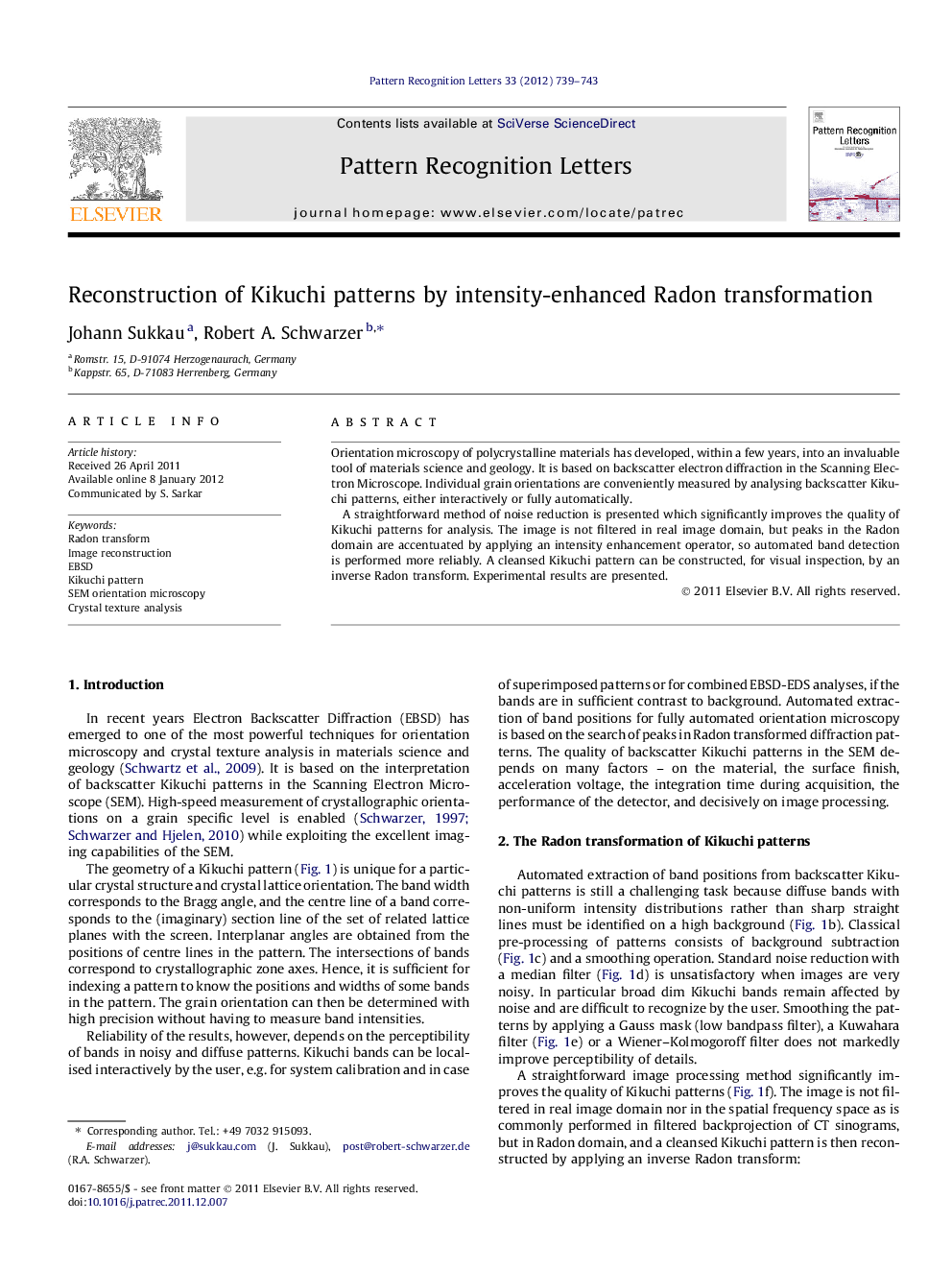| Article ID | Journal | Published Year | Pages | File Type |
|---|---|---|---|---|
| 535823 | Pattern Recognition Letters | 2012 | 5 Pages |
Orientation microscopy of polycrystalline materials has developed, within a few years, into an invaluable tool of materials science and geology. It is based on backscatter electron diffraction in the Scanning Electron Microscope. Individual grain orientations are conveniently measured by analysing backscatter Kikuchi patterns, either interactively or fully automatically.A straightforward method of noise reduction is presented which significantly improves the quality of Kikuchi patterns for analysis. The image is not filtered in real image domain, but peaks in the Radon domain are accentuated by applying an intensity enhancement operator, so automated band detection is performed more reliably. A cleansed Kikuchi pattern can be constructed, for visual inspection, by an inverse Radon transform. Experimental results are presented.
► Kikuchi patterns are denoised by applying an intensity-enhanced Radon transform. ► Reliability of EBSD analysis benefits from improved perceptibility of Kikuchi bands. ► Reconstructed Kikuchi patterns are rich in contrast and detail. ► A higher speed is achieved as compared to filtered backmapping.
